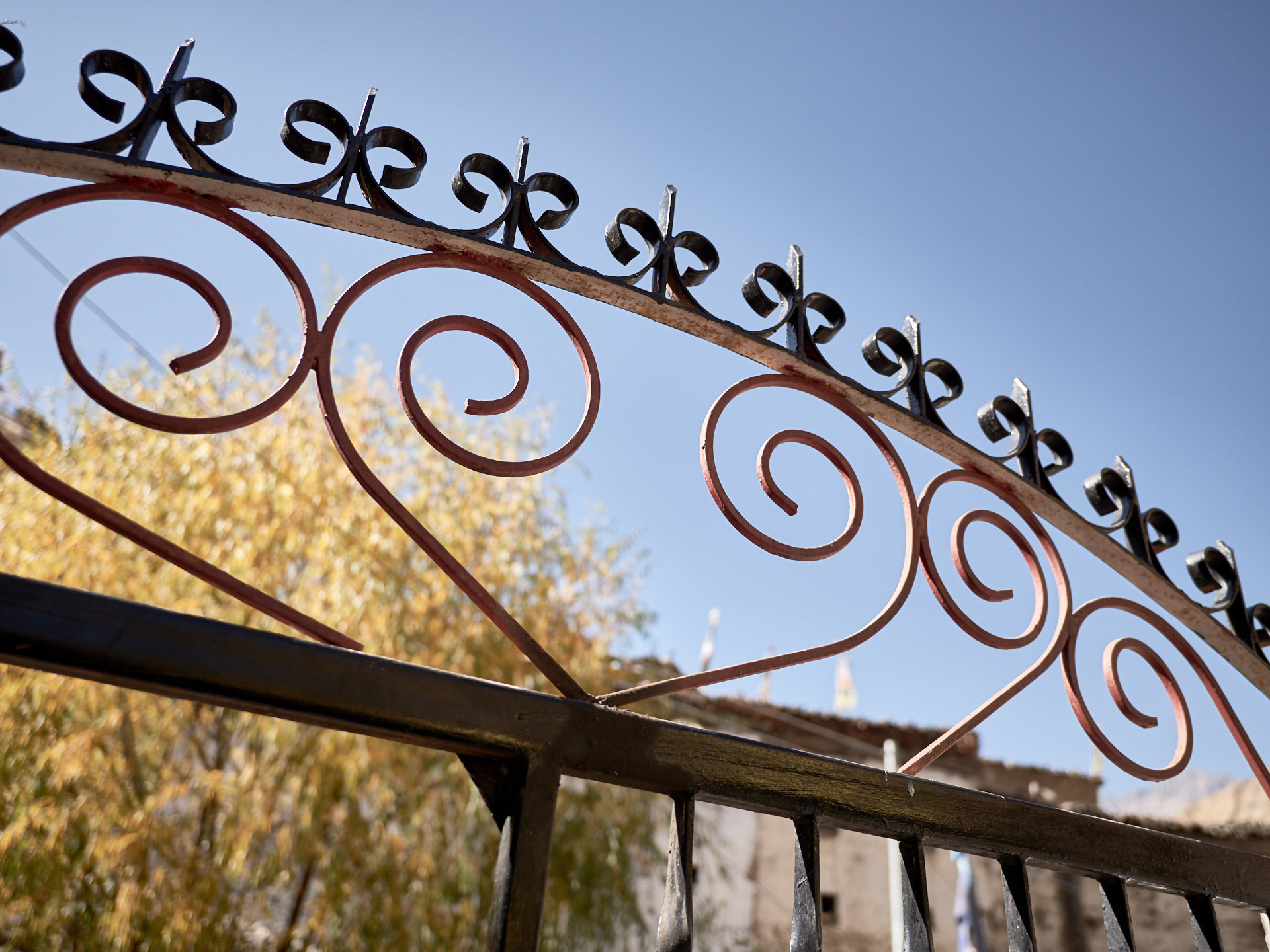July 23, 2023
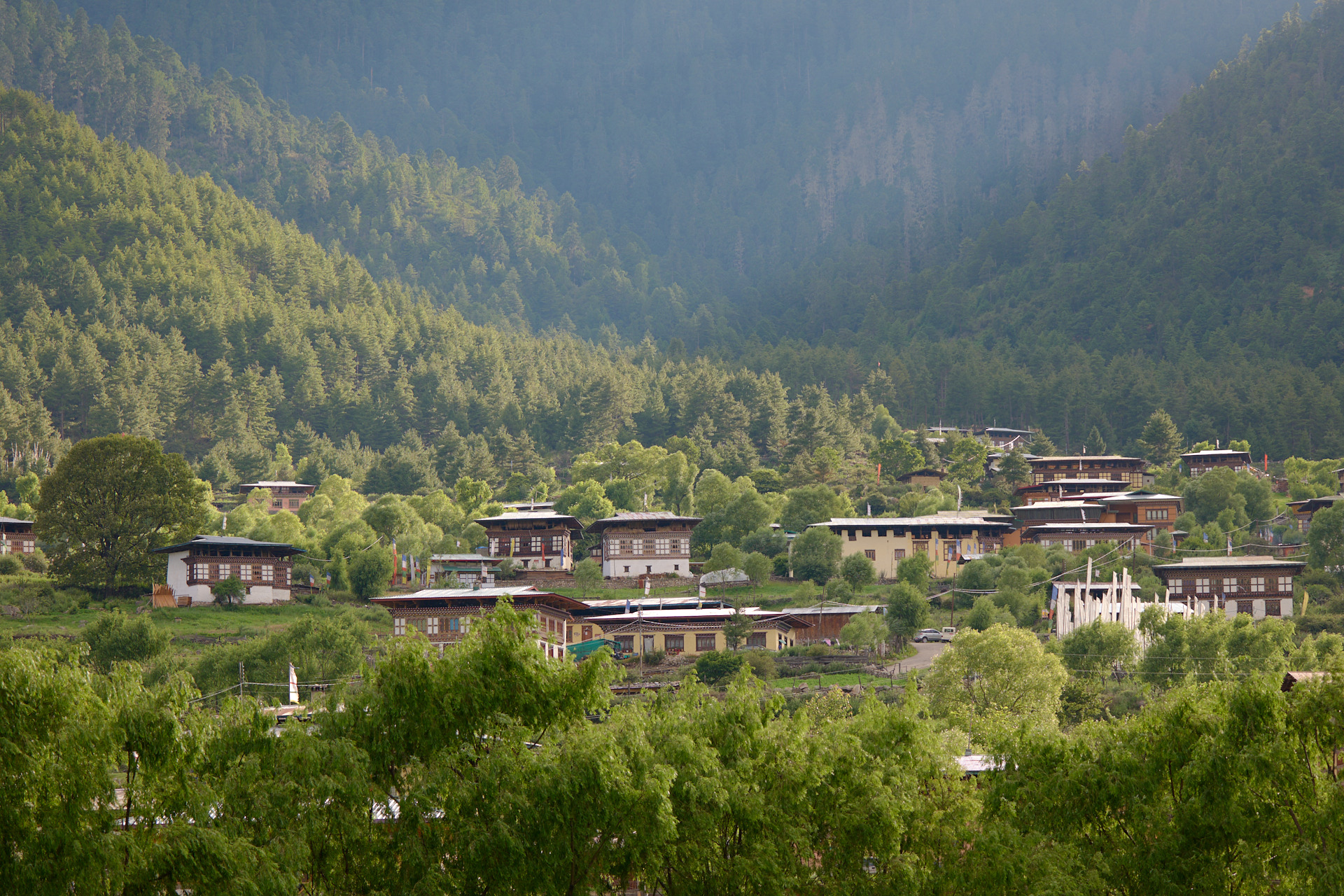
Welcome to two weeks in Bhutan following our gourmet adventures with a private group. This post is sort of like a diary, with a selection of my favourite highlights from each day on the road. It’s intended to provide some detail and texture for anyone who wants a better idea of what expect when travelling in Bhutan in the summertime.
Flight into Paro starts super early in Bangkok with a 730am departure. At least it makes the taxi ride nice and quick! It’s not a long flight, just 3 hours in the air, arriving for a nice 23°C in Paro. First local meal with grilled asparagus, spinach soup, chili cheese, bacon and potatoes plus a little chicken with bok choy. We ate a meal served by Sonam, with views of the Paro Dzong just outside the window. Street lunch we headed to Thimphu, the biggest city in Bhutan. After a quick visit to the national memorial chorten we head into the downtown and to check out the group hotel. Or regular hotel is under renovations so we staying further down town than usual this year. It’s a nice hotel of course, with huge rooms and contemporary style, but I kind of miss the old place and it’s heritage vibe. We’ll be back there soon enough though.
I hadn’t seen Thimphu for three years now and things are definitely changing since I first started visiting Bhutan. Not super fast, but they are changing. More Western clothing and more Western style shopping. Homewares and coffee shops now pop up where there was once hardware and tractor parts. A definite increase in chocolate eclairs and momos around town as well. We start this trip on a Saturday to make sure we get a good look at the farmers market in Thimphu, and collect a few supplies for the cooking ahead. It’s very close to our hotel and It’s huge. It’s pretty exhausting walking about, after a 4am start to the day, and by sundown we are ready for a local momo dinner, a hot shower, and 8 hours sleep.







Low cloud. Lovely lovely low cloud. Waking up in Thimphu the mountains all around is are hugged by low clouds. They don’t even seem to move, they just rest in place as though they too have found peace in this part of the Himalayas. The sun rises very early this time of year, and were awake by 530am. Our day begins with a short drive up the mountain to the giant Buddha at Dordenma where a picnic breakfast has been prepared by our private chef Kinsang. As we drive further up the mountain the views of the valley give way to views of more cloud. It’s coming in around us, wrapping us and the giant Buddha like a blanket.
We walked around the Buddha a few times, watching the cloud lift a little then close in, then lift a little again. I’ve never seen it enrobed by the weather before, and it added something special. Nearby at the head of the walking trail our team had setup for breakfast. And when I say “setup” I mean with a cooking tent, fried rice, plunger coffee and chai. Under the shade of pine trees with the sound of birds waking up in the forest, we sat down to enjoy a little patch of the Himalayas.
The walk itself was just a little more special than I remembered. It starts with amazing views of the distant Dordenma, before descending into the forest. Rhododendrons, ferns and butterflies line the trail, and in sections we’re walking on a carpet of flower petals or descending along the edge of trickling creeks. Every kilometre is a different kind of forest, with different flora and different butterflies. It’s remote and peaceful and abundant. Sometimes the wilderness is my temple.
The trail is up and down, but generously more down. We prefer gentle walks on these trips. I don’t do hiking. Most sections of trail anywhere in the Himalayas are uphill and hard. Out team works diligently to find those little treasures of trail that are more accessible and less demanding. I want to enjoy the forests, not conquer them.
We’ve built a library of walks that’s are all between 2km and 6km, and logged them with a GPS tracker. This helps us to translate from Bhutanese interpretations of climb and distance. “It’s only 2 hours” for Bhutanese guides may or may not be suitable for folks like myself who struggle with terrain. Osteo arthritis and plantar fasciitis, for example, are very common afflictions so we want to be careful not to push our guests too hard. We’re all about making the Himalayas accessible.
We like to start slow on these tours and give people a chance to get used to walking a little bit in the mountains. Most of us lead lives on flat terrain, and even if you’re good at hitting your 10,000 steps a day, they’re usually not uphill or on trails. So the first few days you might end up with a few aching muscles, muscles you didn’t even know you had. Goley goley. Slowly slowly.
After the walk we return to the hotel for a quick shower and check-out before lunch. We have a few hours drive ahead of us, plus stops for local lunch and roadside snacks. After we clear the high pass at Dochu La the road descends back down towards Punakha Valley, and it’s here that roadside stall selling freshly cooked corn-cobs are making a killing. At other times of year you might just see rice-puffs and fresh veggies for sale, but in July there’s plenty of fresh corn harvested.
Eventually the road brings us into the rice terraced slopes of Punakha. There’s a mix of freshly sowed rice paddies and more advanced crops that are lush and green. Planting rice looks like back-breaking work, right up there with harvesting rice. I always feel guilty to leave rice on the table at a meal, having seen how hard people work to grow this stuff. Our drive takes in some amazing views of the rice villages, and a few special temples that we’ll get to visit in the coming days. Punakha Dzong is the big event here, a massive complex of religion and power dating back to the 1600s. There’s a stunning timber bridge that spans the Mo Chu (River) before you access the main stairs to the Dzong itself. It’s majestic in that particular way that only Bhutan can do.
Our journey keeps rolling past the Dzong and heads higher up the hill. We have a hotel with a cracking good view of Punakha Dzong, and a yoga instructor waiting to guide us through a beginners class. We design this more for stretching and breathing than anything else. We’re not trying to turn our guests into hippies, we just recognise the value of getting into a good routine with stretching the legs and back after a decent walk in the mountains. It’s a nice finish to a long day exploring Bhutan.







This morning’s schedule is all about Punakha Dzong, and a chance to see it up close. When you arrive at the wooden bridge there’s a steady flow of beautifully dressed Bhutanese people walking through. I always tell my groups to dress “respectfully” when visiting a temple or Dzong, but the Bhutanese take this to another level. Their traditional dress, the Kira for women and Gho for men, leaves a lot of room for individual colour and expression, while creating a culturally distinctive impression. The Bhutanese folk look marvellous when dressed up. Anytime they attend govt office or temples they will dress in the traditional style.
Outside the Punakha Dzong a shower of yellow flowers is in bloom, a cloud of cover above which the Dzong rises. Inside the Dzong there are monks doing what monks do. We hear the chanting of parables accompanies by musical horns, cymbals and drums. It’s important to recognise that monks are not just monks, but they begin as novices who are still in the process of learning what it means to be a monk. They have personalities and attitudes and quirks just like regular young boys. Some of them embrace the monastic lifestyle better than others.
The more experienced monks are also unique in character and personality. Being important within the hierarchy of a monastery in no way precludes them from a sense of humour. We watch younger monks take selfies with an older and wiser lama, while most of his entourage are fielding calls on their mobile phones. There are several prayer halls inside Punakha Dzong, and you are allowed to enter. Inside are giant replicas of the Buddha, in various poses, plus other gurus and daemons, and usually coated in gold. Torma offerings are lined up before the statues, along with butter lamps and smoking incense. Scriptures of parables await the attention of monks who will chant the lines with both musical and spiritual intent.
Lunch today is a little further upstream from the Dzong. We park the bus next to a wire bridge that spans nearly 50m of river. For first time visitors to the Himalayas these bridges can be quite intense, as they sway and move underfoot. For myself I just enjoy the chance to walk over the top of a fast flowing river and watch the current crash into boulders. It’s dramatic and powerful and the bridges offer a birds-eye perspective.
Our host for lunch runs a small farm with all the usual Bhutanese staples, but the addition of many fruit trees. After eating a gorgeously presented Bhutanese meal she presents us with bundles of lychees picked from her own garden. We don’t think of tropical fruits when we think of Bhutan, but even here in Punakha the mangoes and lychee are doing super well. I’m used to eating these things out of a can, so having them pulled fresh from the tree was a super treat for me. We spent a little more time learning about the farm, and trying to photograph butterflies. They had so many varieties flittering about at the farmhouse, but none of the kind that like to sit still for my camera lens.
We’ve only been here for a few days and yet I’ve enjoyed the butterflies immensely this trip. I often struggle to work out which species I’ve captured through the lens, but usually manage to get down to the family classification. I did a little Googling and found a check-list for Bhutanese travellers, listing all of 670 species. That is amazing. I’m still learning my way around a Jezebel from a Swallowtail.






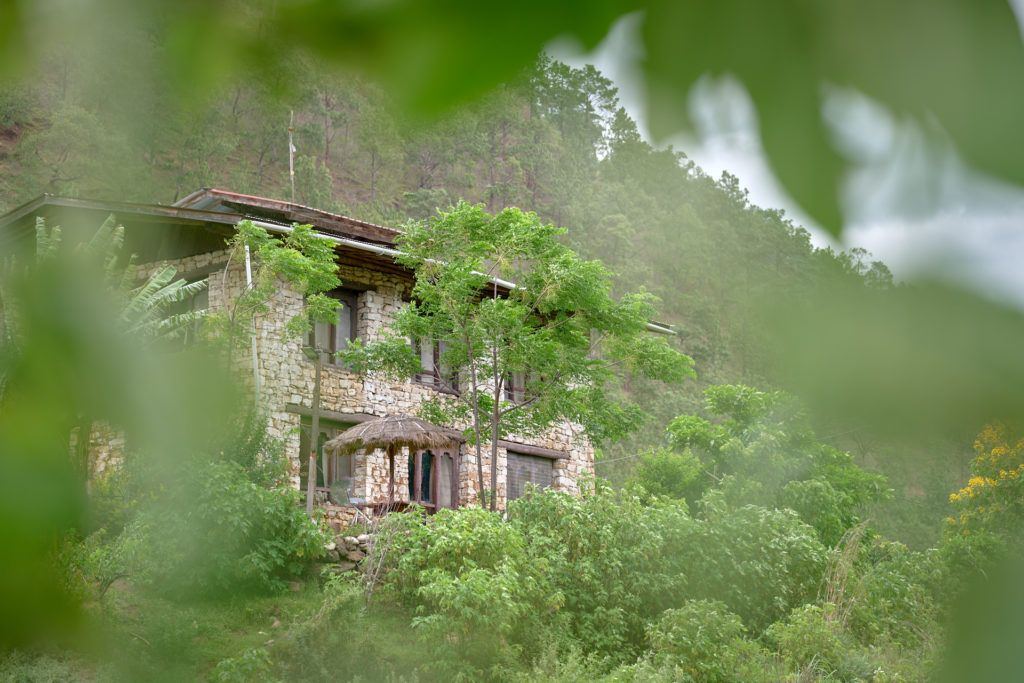

The scenery on the drive to Gangtey is epic as we move through various climate zones and habitats in the space of a few hours. We follow the river valley, lined with rice fields and vegetable gardens at the start of the journey, climbing higher end higher into the mountains. Broadleaf forest eventually takes over and signs of human habitation become increasingly infrequent. Waterfalls and prayer wheels punctuate the route. The clouds occasionally crash into our side of the valley, blocking out the view for a few minutes. We stop at one spot to photograph the mist rising up at us, and with the engine of the bus turned off we suddenly become aware of the bird life all around us. The forest sings.
At Nobding we pull into a familiar kitchen for a truck-stop meal, Bhutanese style. I’m hoping for Bathup (imagine a thick creamy soup with droplets of home-made pasta and little bits of beef, seasoned with flower pepper) but it’s high summer now and Bathup is more of a winter dish. We make a plan to get our hotel to prepare an evening meal of Bathup instead, and wait to see what’s hot in the kitchen today. Pork Curry and Shabaley are the main heroes of the meal. Shabaley are like pasties, but translated to the Bhutanese palette. We end up ordering a second plate because they are delicious. The curry was a real treat though, a Nepalese style based on onions, tomato, and a generous amount of ground spices. By the time the curry arrived we were pretty much full already, and yet we finished off the serving regardless.
Nobding is about 1000m higher than Punakha and the air is notably cooler. By the time we reach the high pass at Lawa La the clouds have moved in and the wind is picking up as well. It’s so cool we grab our jackets from the luggage. A little rain drizzles down as we start our walk, but we’ve got umbrellas on the bus for such occasions. Within ten minutes the sun is back out again, and the umbrellas are handy to keep the heat off.
I’ve visited this part of Bhutan a lot over the past decade and a bit, and it always makes me feel happy to be here. This is my first time in summer, and what I notice most is the variety of flowers blooming across the meadows. Tiny little flowers bursting up between grasses. Sure the valley and the pine trees and the rolling mist are all lovely, but these delicate little explosions of colour seem so precious to me. I love so much about Gangtey and Phobjikha Valley, from the migratory cranes to the potato farmers and the magnificent Gompa overlooking the valley, but it’s these little detail in a landscape that make the day perfect.







First stop of the day of Gangtey Gompa, a unique and beautiful temple that overlooks Phobjikha Valley. Monks are busy doing their daily chores, their laundry and getting up to mischief. They’re still young lads underneath the robes. They can’t help but be boys at times. Next to the entrance a small table was setup, which at first glance looked very official as though checking for permits perhaps. A bunch of novices were gathered at the table watching a very young novice (maybe 5 years old maybe less) scribbling his renditions of kittens into a notebook. The monks of Gangtey Gompa get up pretty early, so by 10am they’ve already done their laundry and are hanging robes out to dry.
Our nature walk begins at the Gompa, heads downhill quickly for the first kilometre, then rolls through the pine forest and fields of barley. It’s a chance to get up close with Alpine flowers and a dizzying range of butterflies. We are warned “do not eat the mushrooms”, as if somehow we’re going to be cooking up our own creamy pasta for lunch. We finish the 6km stretch where the cows are grazing along the marshy valley floor. Wagtails. Hoopoe. Skylark. Shrike. Finches. All these birds are also hanging out on the edge of the marshes.
Lunch today was a genuine treat. While the group was getting up close to nature the chef was getting serious about momos. In an open field surrounded by skylarks and cows our chef, Kinsang, setup his kitchen. With just a small gas burner, a chopping board and a steamer he spent hours preparing and folding his momos. One filling was beef mince and the other cheese and cabbage. Onion and coriander is also used to lighten the mix. We sat down to a little table in the field and enjoyed fresh months momos hot out of the steamer. Kinsang had joked a few days earlier that his momos were the best momos. Every cook will say this right? Honestly though, I’ve never enjoyed a momo lunch like this one. Five stars.
The drive to Gogona is spectacular. Slow, but spectacular. Rhododendron forest and centuries old hemlock dominate the slopes. Some of the fir trees are gigantic, dripping with Spanish moss and hosting entire ecosystems of bugs and birds. We glimpse a rare Himalayan Tragopan dashing across the road, and hear the call of Monals somewhere in the distance. This road is an upgrade to an ancient walking track, and we average about 10kph. It’s bumpy and narrow and we’re the only vehicle on it all day.
Descending into Gogona we meet a family with their herd of dairy cows. Many herds move up and down the elevations each season to chase the cooler weather. We watch them milking the cows, and get a little distracted taking photos of the calves. They let the calf have a feed to get the milk moving, then pull it away for a few minutes while the cow is milked into a bucket. When the milking is done the calf is released to hang out with mum and have a proper feed. The calves are not shy of humans and the mums are not overly protective. It’s a very low stress situation for all involved.
Our destination is a cheese maker deep inside the valley, a lady called Chimi Dema, who was trained by the famous Fritz Maurer – Bhutans only other cheese maker. She and her husband (Sherab Dorji ) run a cooperative, using milk from local dairy farmers who all get a share of the profits from sales. Blessed are the cheese makers!
They only make three kinds of cheese, but they do them well. Emmental, Gouda and Mutschli. I’d never heard of Mutschli before and I’m pretty mad about it: this stuff is gorgeous. It’s right on the edge of being a stinky cheese without being a stinky cheese. Rich flavour, semi-firm and a creamy creamy texture. 30kg of cheese a day comes out of the “factory”, and we watch them prepare their daily batch as a giant vat of milk is turned into a single wheel of Emmental.
Lunch today was a highlight as well. Kinsang setup his mobile kitchen in the shade of the farmhouse and used a generous amount of Mutschli in his recipes. Imagine if you will dried red chillies, chopped into fine pieces, along with garlic and fatty bacon, cooked slowly in a frying pan with the cheese going in last. Another dish used dried fungi from Phobjikha, cooked with glass noodles and coriander. Bhutanese food is delicious when prepared well. We had the benefit not only of some seriously good cheese in the mix, but a semi-frozen bottle of coke that was like drinking a slushy out of a bottle. I don’t go for the coke too often, but sometimes with a flavour packed Bhutanese meal it really really hits the spot.
I needed a walk after lunch to work off the Mutschli, so we got off the bus just before the hotel to explore a 3km downhill stretch. Kinsang has worked in this region for decades as a trekking cook, and knows a few trails that deviate from the main track. We spent over an hour taking photos of butterflies and gently walking along the grassy trail. We ate wild strawberries along the way, crossed over a pristine creek, and walked through carpets of purple flowers and bracken. No cow pats to dodge or jeep tracks through the mud. Just forest and wilderness and that feeling of being in one of the world’s most peaceful kingdoms.












Rain and mist this morning. Summer is the wet time of year in Bhutan. Most of the trip so far has seen just short bursts of rain that don’t last long, but this morning was full on rain, the kind that tests the gutters and downpipes. It felt cleansing and invigorating. We felt the cold front arrive early the previous evening, enshrouding the resort in mist and pushing a welcome breeze through the hotel room. Phobjikha can still get hot and humid despite the elevation, so the sudden drop in temperature was both noticeable and welcome.
Descending down from Lawa La was gorgeous. We’re driving through the cloud, with mist obscuring the hemlock and rhododendrons. It felt so calm and so peaceful. For an hour we drove in the mist, with occasional light patches that revealed a hint of what lies across the valley. We stopped at one place to photograph the shadowy trees by the road, and all around us the call of bird song echoed. Different birds to the ones higher up, like the piercing strobe of a Great Barbet and the melodic call of the Racket-tailed Drongo. We only heard them though, in the mist we could see nothing.
By mid-morning we’ve descended all the way to Wangdi (Wangdue Phodrang Dzong), around 1500m of elevation, and the air is humid and warm. We make a stop at Wangdi, a unique temple that clings to the edge of a steep isthmus where the Puma Tsang Chu meets the Dang Chu. This was one of the first festivals I attended when I came to Bhutan the first time, so it’s a little bit special to me. In 2012 a grass fire raced up the hillside and the temple was destroyed. It’s taken a decade of effort to rebuilt it again and this is my first chance to see the new restoration for myself.
The final highlight of the day was a visit to meet the first coffee bean roasters in Bhutan. In a small cafe on the edge of downtown Paro a lovely roaster has been put to work to turn Bhutanese beans into coffee. Arabica beans are grown in the south of Bhutan, sent to Paro and roasted for local consumption or sold to hotels and travellers. Coffee is increasingly popular in Bhutan, and cafes have popped up all over Thimphu and Paro. Coffee beans are one of the few cash crops the folks down south can grow that don’t get eaten by local wildlife.







The drive up to Chele La from Paro is magnificent. It’s a narrow and windy road but smooth. We climb and climb and climb some more in the way to Chele La, a high pass at 3800m. The sunshine was out in Paro Valley, and it was fierce. Jet blue sky with only a few clouds clinging to nearby mountain tops.
When we arrive at the pass our plan was simple. Look for blue poppies while Kinsang sets up his kitchen for lunch. An elevation of 3800m is very noticeable once you start walking about. We barely felt the altitude at Phobjikha, thanks to the slow ascent and the gentle pace of the trip. Today was a touch more of a test when hoofing up the slopes to shoot prayer flags in the breeze.
Lunch was sensational. Our trekking cook, Kinsang, really nails the genuine Bhutanese flavours without over doing the chili. We had potato with cheese and coriander, plus slow cooked beef with glass noodles. And rice. Always rice. The cheesey taters were just so full of flavour, and the beef was tender like marshmallow. There was hear from the chili, but just enough to give it flavour. All this inside a little tent, sheltering from the wind, in the middle of a high pass at 3800m. Amazing.
While the boys packed up the kitchen gear, a few of us headed along the ridge line in search of the Himalayan Blue Poppy. It’s a rare flower and most people in Bhutan have never seen one. We had a reliable colleague inform us of where it might found, less than 1km from where we had lunch. At an elevation of 3800m a short walk can still be exhausting, but in this case absolutely worth it. We found a small patch of them clinging to a rocky outcrop, glistening in the sunshine. And they were indeed a proper shade of blue. We took a tonne of photos and revelled I’m the simple joy of finding a rare flower in the bush.







Breakfast at the farmers market is typically about momos and chai, but in Haa this weekend they had a special guest appearance with a puri lady. She was freshly rolling and frying the dough, then serving with a spicy potato gravy. Probably would have tasted great with Nutella as well, but almost nobody in Bhutan knows what that is! Another lady had very spicy Bathup, the flecks of chili giving it a fabulous colour. Mostly the market is about produce to take home and cook yourself, including very seasonal treats such as fiddlehead ferns.
Lunch was at a local farmhouse, with a family who invite guests to come and try the food of Haa. The main feature of the local cuisine is buckwheat, which grow well at the higher elevations but does need a different set of skills to cook compared to regular wheat. Our host prepared a special kind of dumpling called “Hoentey”, which can be served fried or steamed. They’re a little more rugged than a momo, which uses regular wheat for the dough.
Buckwheat is used to make the hoentey pastry and inside they fold in a mix of turnip leaves, ginger, poppy seeds, cheese, chili, onions, garlic. They could make a meal on their own really, but our host prepared not less than seven accompanying dishes. Slow cooked beef stew, ema datshi, spinach, and more. One highlight was the hot philu, a special kind of yak cheese that tastes like a Himalayan version of blue cheese. Philu is made by fermenting yak milk and adding fresh milk each day over the course of weeks. It’s a pungent flavour for sure, but the texture is nice once heated through into a sauce and goes well with the rice. I’m not a fan of stinky cheese in general, but this one grew on me and I went back for seconds.
The finish to our day was yet more momos, but these ones were a little bit special. We let the group try their hand at “designing momos”, where we suggest a few new flavour combinations and then see how Kinsang goes at assembling the new ideas into a real dish. The team picked a nice paddock next to the main river in Haa and setup the cooking tent. Kinsang walked our guests through the preparation of the momo dough, making the momo fillings and how to wrap them by hand. We watched the last light of the day turn the valley golden, and sat down to enjoy some “pork and ginger” and “chicken and coriander” momos for dinner.















We had a sleep-in this morning before heading a little further up the valley to visit a small temple. Only 28 monks call Yangthang Gompa home, and they have very limited resources. It’s a poor community even by Haa standards, and this temple makes do with very little. Normally the monks get two meals a day, breakfast and dinner, but on special occasions they get lunch as well. Our visit today was a special occasion, and we cover the cost of the extra meal plus leave some treats for the weeks ahead. It’s a humbling experience to dine with the monks, and it feels more than a little odd to be the “guest of honour”.
We visited the kitchen just before lunch was served to see how they’re preparing the meals. One lady does most of the hard work but does her best to teach the monks useful skills, like chopping and washing. The kitchen is her domain and she gives a few of the boys a talking to when they mess up the recipe.
There’s a bit of ceremony when it comes time to dine, and the head lama takes a seat before everyone else. We get served next. Nobody starts eating until everyone has a plate of food in front of them, and then they chant a parable for maybe sixty seconds. Gratitude and humility are key themes for a novice monk. The meal itself is rice with spicy potatoes (red chilli), mushrooms in chilli-cheese sauce, straight up chilli-cheese, and “aezay” which is like a salsa but in this case with chillies so hot won’t be able to feel your mouth for an hour. I don’t get through much of the meal myself. I like the flavour of chilli but every so often the Bhutanese take it too far 🙂
We have a big drive ahead to return to Paro, and a stop along the way for ice cream.


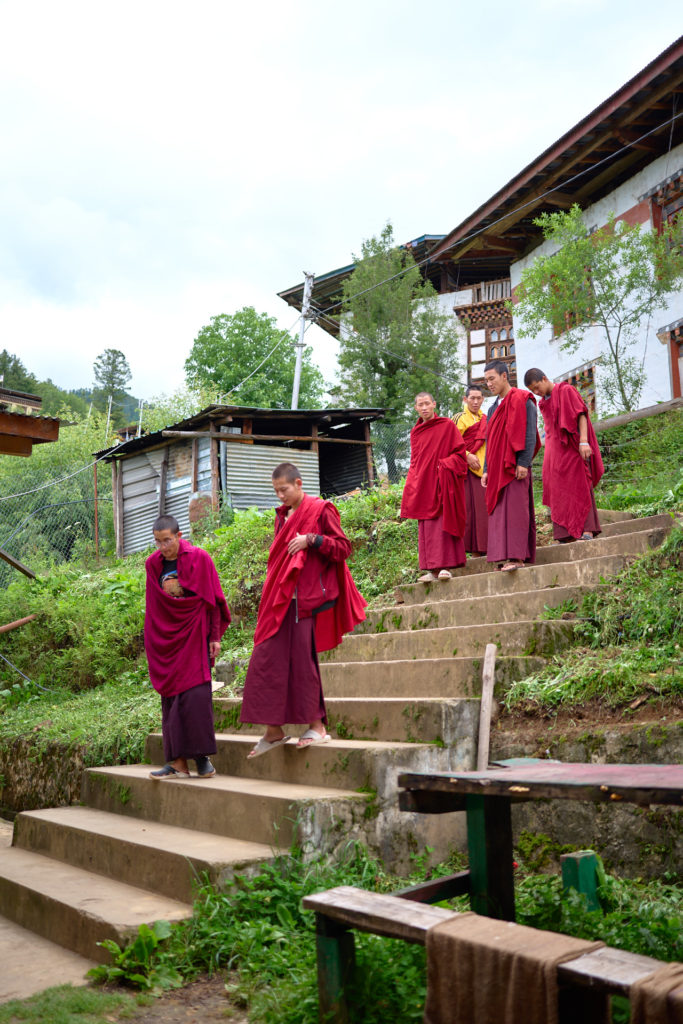




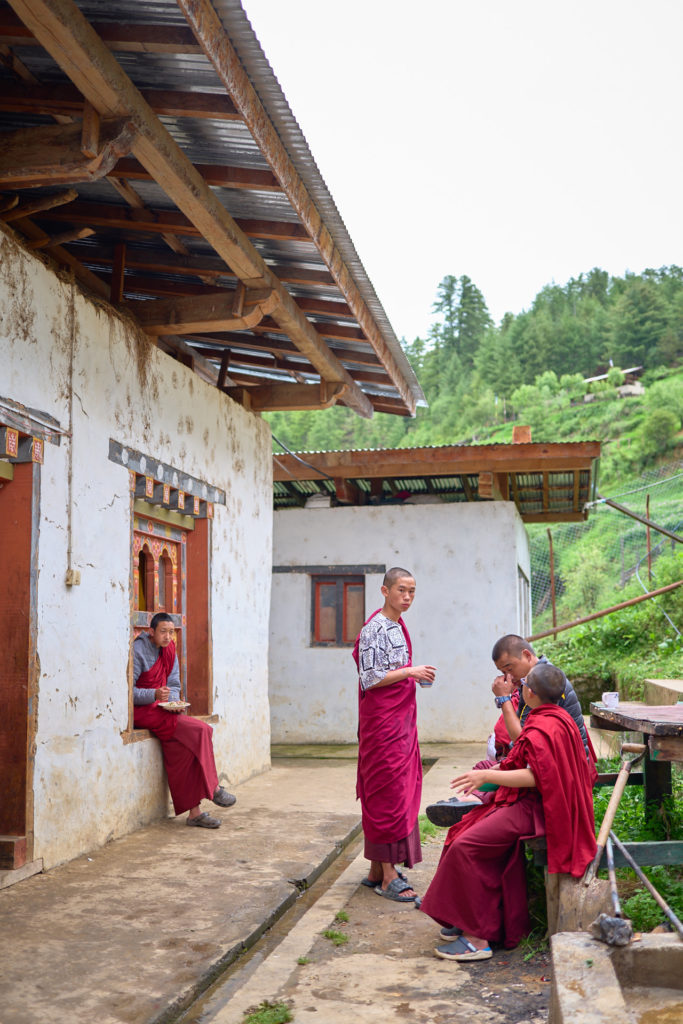


Few places capture the spirit of a country the way this temple does. The site of a small cave where Guru Rinpoche, who arrived on a flying tigress, meditated for many months to banish evil from the land we know call Bhutan. In the 8th century the site was nothing more than a cave, but in more recent centuries the location has been embraced by a more elaborate temple complex that clings to the side of the hill, accessible only by way of steep mountain trail.
Taktsang represents so much of what makes Bhutan unique. The remote location and difficult access, their depth of conviction in Buddhist beliefs, the elegant and powerful architecture, the reverence of the temple and rules around access to it. You cannot bring your cameras inside, and must wear respectful attire to enter.
The walk up to Taktsang (Tiger’s Nest) is often the very reason people come to Bhutan. Such a remarkable piece of Bhutan’s identity, yet not everyone realises how hard to walk will be. The trail climbs through 600m of elevation over the course of nearly 4kms. It’s much much easier to tackle after acclimating to the altitude of Bhutan of a week or so. I’ve seen some people literally get off a plane in Paro and head straight up the trail, and they look like they’re lungs will explode.
We take it in three parts. The first section from the carpark to the teahouse is rewarded with views of a distant Taktsang and a nice cup of tea. At this stage you’re twice as close to the temple as when you started the walk, and usually takes about an hour if you’re fit, and maybe 2 hours if you’re like me. The next section is a similar distance, but slightly more gentle gradient with a few more flat bits, and then you arrive at the lookout to Tigers Nest. Standing on the edge of the ridge line you can see the temple just across the ravine.
It feel so close, but it’s not. The trail now descends down into the valley, then back up again before reaching the temple. And it’s all steps. This is the section people find hardest. It’s not so long, but it’s relentless and hard on the knees. And you have to repeat the down+up when you head back again. The views from either the lookout or the temple itself are magnificent. For me, the lookout is more satisfying, because you get to marvel at how people constructed this exquisite temple on the side of a cliff.
For both myself and my guide Rinzi, the path coming back down from Taktsang is the real challenge. After countless trips up and down this trail, we’re both feeling the wear and tear. He’s a tall fellow with a big frame, and I’m just plain over weight. We have to take these things slowly, and I can see a future where Rinzi may send a younger guide in his place too. In my experience age is no indicator of difficulty on this walk.
In the absence of a flying tigress however, it’s the knees that take the hit. Taktsang is one of the reasons we like to finish a trip with a nicer hotel than usual. A special treat to reward everyone who has done the hard climb. If you only come to Bhutan once in your life, why not make it something special 🙂








Quirky hotel rooms are part of the bargain in Bhutan. As hotel owners strive to make their accommodation more appealing to travellers they often get a little carried away, sometimes in the wrong direction.
Read More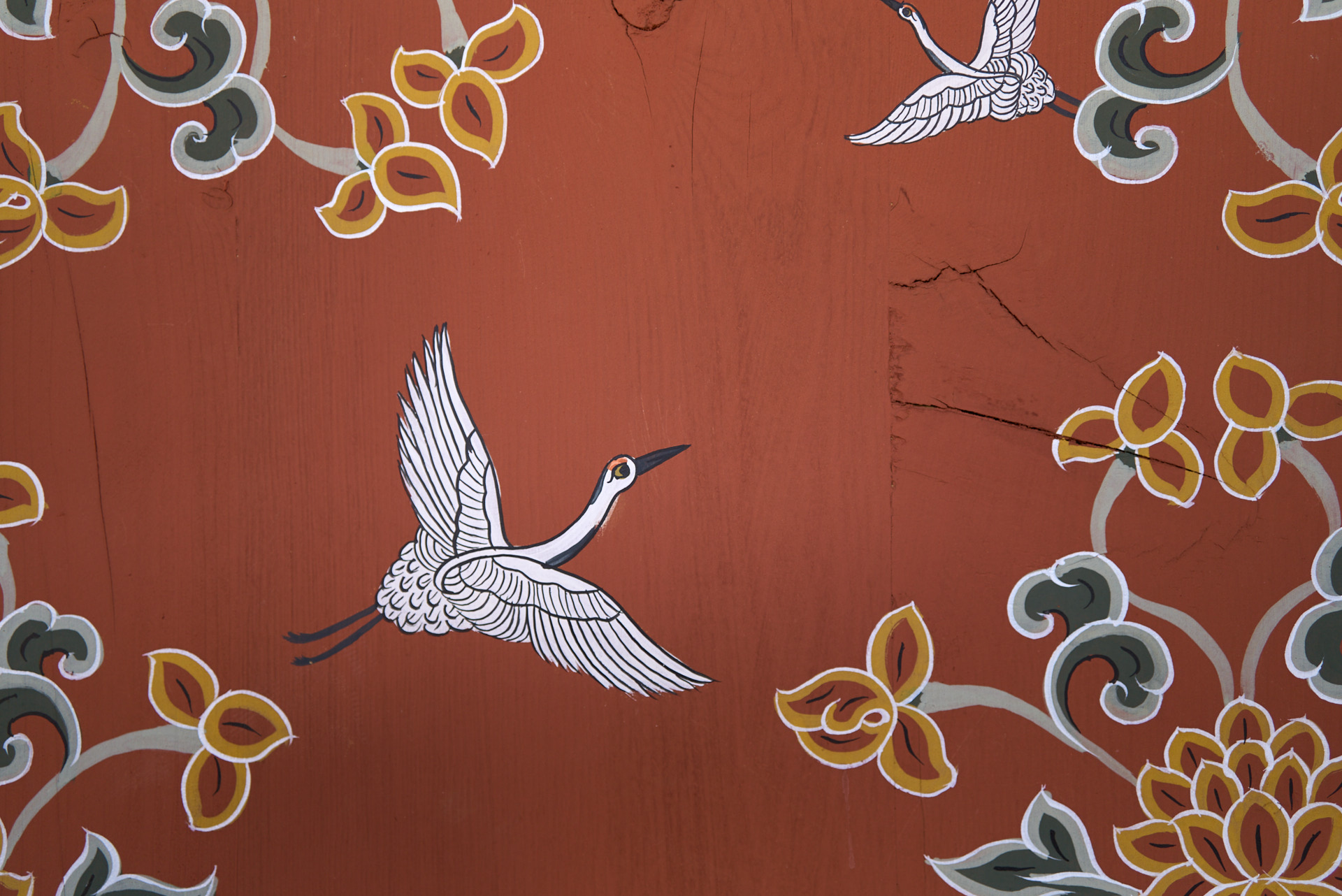
Our trips to Nepal and Bhutan this year are confirmed to run. Which is great news for our local teams in Bhutan and Nepal.
Read More
“It is solved by walking” hints at thousands of years of wisdom yet remains relevant to our modern day lifestyle.
Read More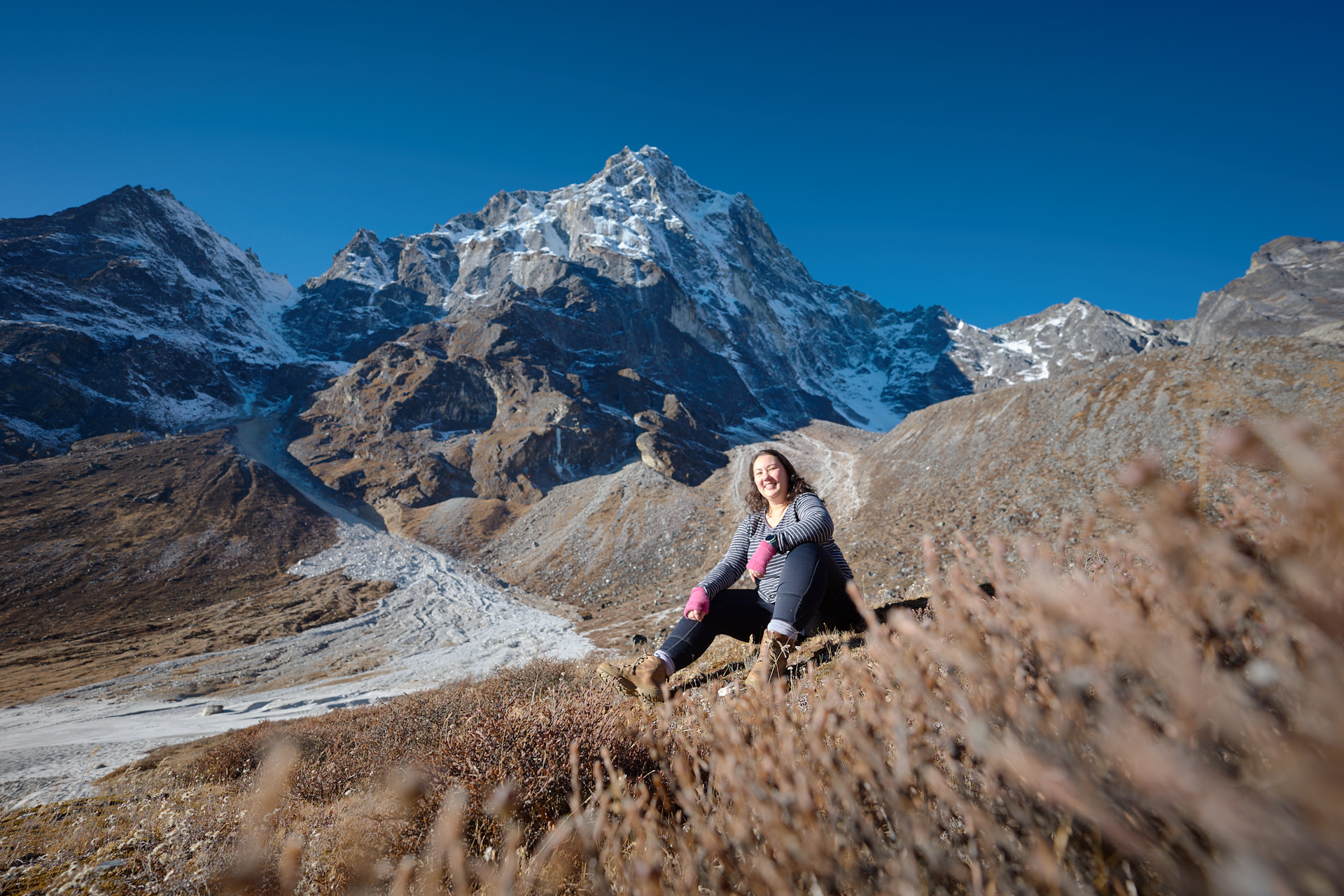
The four day safari experience in Bardiya offers a touch of luxury, but no certanties when it comes to seeing the elusive tigers.
Read More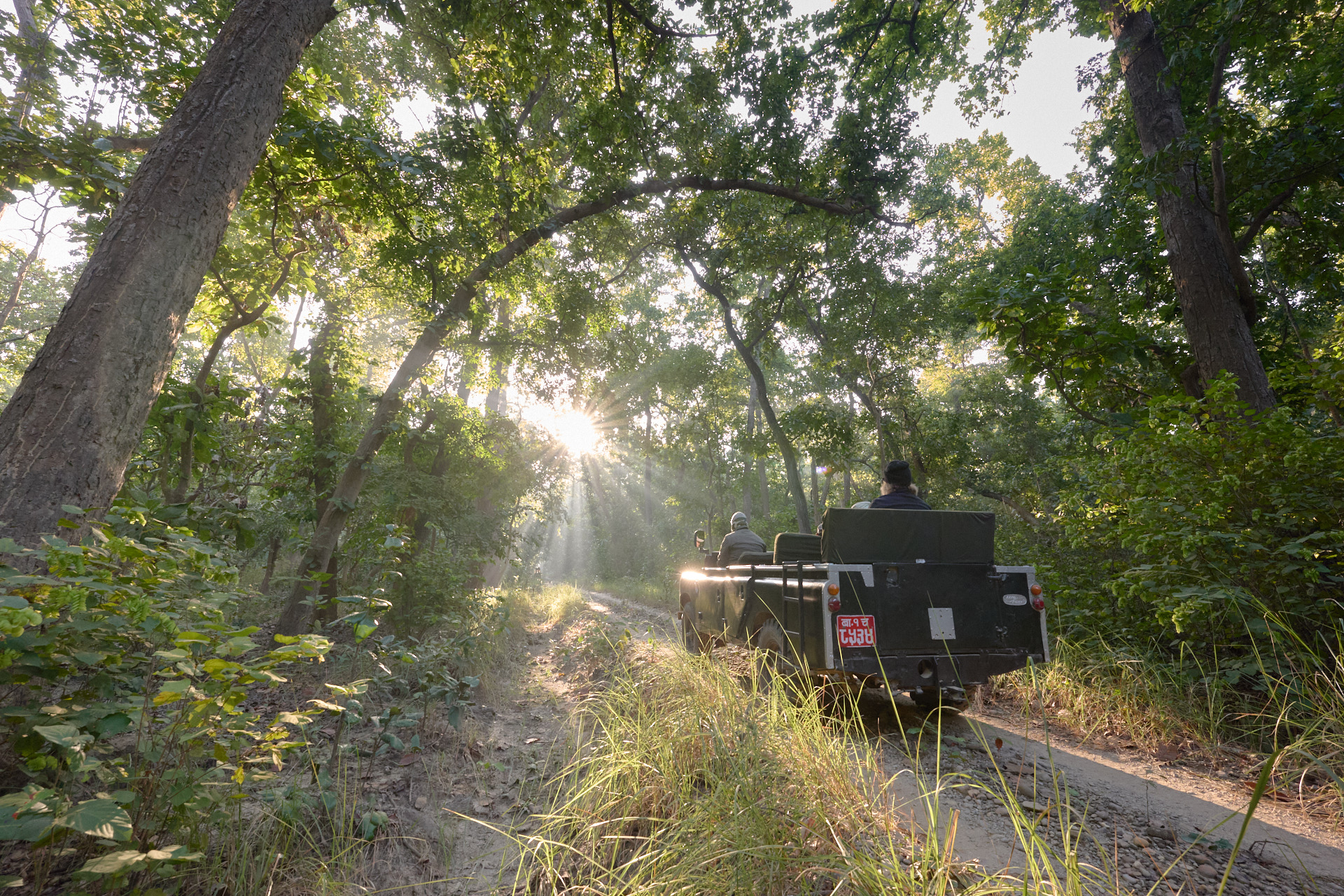
With the rainy season at an end, the clear skies of winter bring stunning light and peaceful moments.
Read More
Bhutanese cuisine has always been full of flavour and spice, it's just that travellers rarely get a taste of the real thing. We're changing all that!
Read More
You don't have to trek to see some superb scenery in the Himalayas. In fact, we prefer not to!
Read More